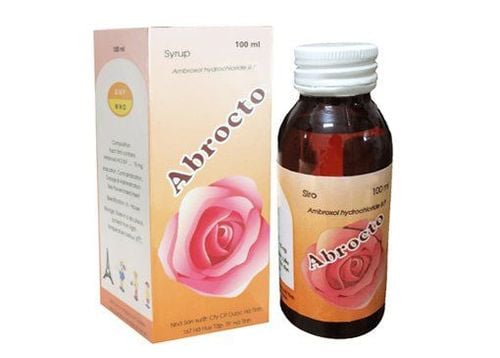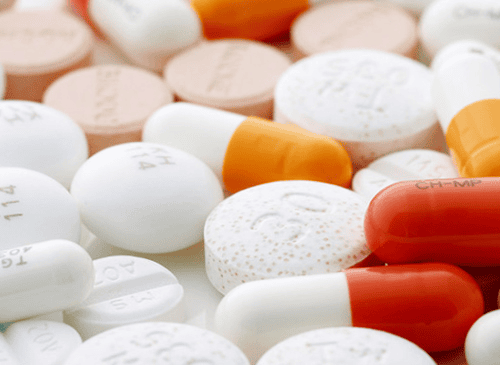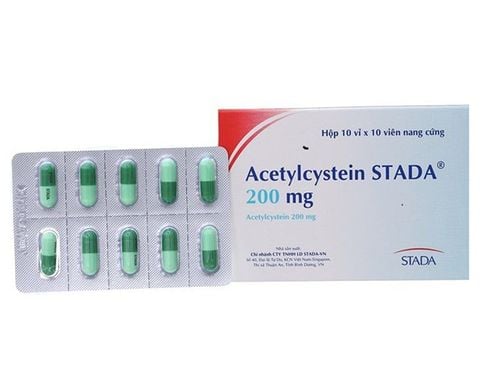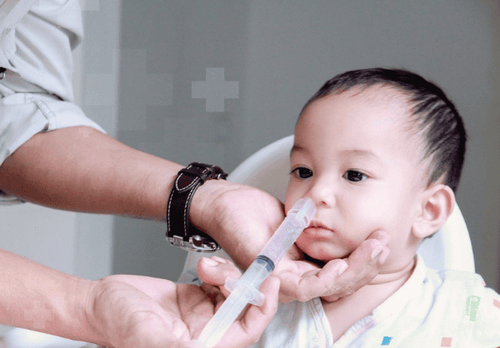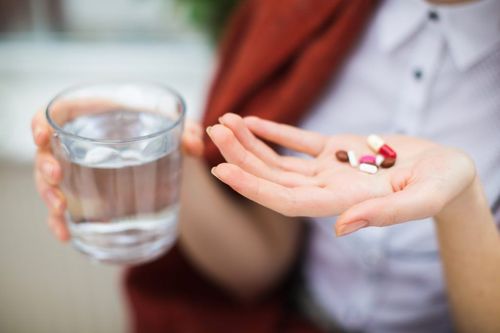This is an automatically translated article.
The article was professionally consulted by Assoc. Prof. TS.BS Huynh Thoai Loan - Head of Pediatrics - Neonatology Department, Vinmec Central Park International General HospitalIn children with respiratory infections, cough with phlegm, parents need to apply measures to expel sputum for children to reduce discomfort when sick. Folk therapies, combined with back patting and medication can all be applied on a case-by-case basis.
1. What is phlegm?
Sputum (also known as sputum) is a secretion of the respiratory tract, including mucus, red blood cells, purulent white blood cells, ... Sputum is expelled from the body from the lower respiratory tract (trachea and bronchi).Sputum is common in children when they have a cough. Cough is a physiological reflex to expel fluids, phlegm secreted by the respiratory tract or foreign objects from outside such as food, dirt, ... to protect the body. Besides, genetic factors, climate and weakened immune system, ... also cause phlegm. Cases of prolonged cough, accompanied by a lot of sputum, can affect the development of children if not actively treated. Therefore, children with cough with phlegm need to be treated early and aggressively so that they can grow up healthy.
2. How to expel phlegm for children
Instill physiological saline - suction sputumPut the baby on his side, put about 5-6 drops of physiological saline into the upper nose, if the sputum is too thick, use a sputum suction tube on the lower side of the nose and then switch sides, do the opposite again. Pay attention when using nasal drops - suck sputum for the baby not to block the other nose because this will make the sputum in the nose cannot escape and can make it difficult for the baby to breathe. The nasal drops - suction of sputum for the baby should be done 5-6 times a day.
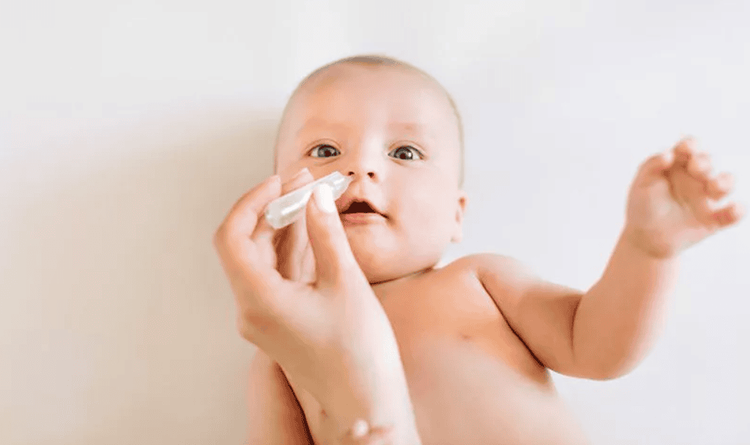
Nhỏ nước muối sinh lý cho trẻ
The appropriate position of patting and loosening phlegm is: Let the child lie on his side, sit with his head forward or the mother carries the child. These postures help to drain phlegm better. Regarding the position of vibrating, parents should pat from the child's lung area, patting from the bottom up to drain sputum from the bottom to the mouth and throat. The baby's lung area is determined from the waist up.
The technique of patting is as follows:
Hand cupped to form an air gap so that when patting the child, it will not hurt (if the hand is straight, it will hurt when patting the child); Using wrist force to shake the child, the clapping sound is the correct technique. When flapping properly, you will feel the baby's chest vibrate with each beat, the baby does not feel pain. Note: Do not use arm force to shake because it can cause pain to the child; Vibrating for about 10-15 minutes/time. After vibrating, the child may cough a lot and vomit sputum. Parents should observe whether the sputum is thin white or green, solid yellow to report to the doctor.
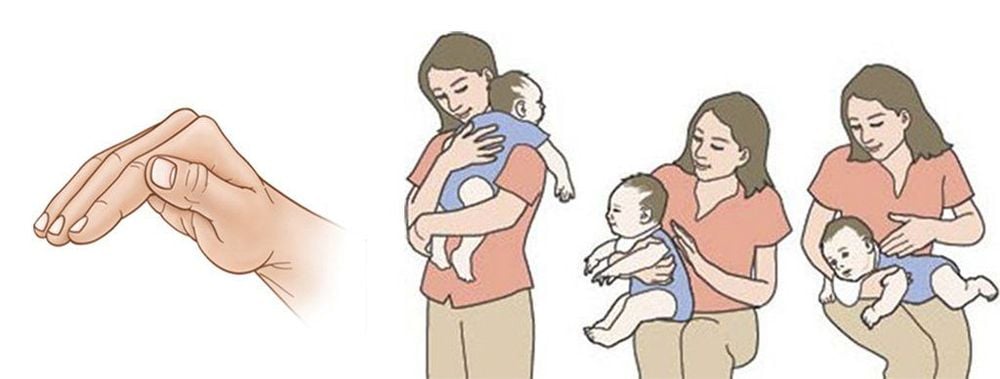
Kỹ thuật vỗ rung ở trẻ nhỏ cần thực hiện chính xác
3. Other sputum-dissolving methods for children
Increase breastfeeding and give children enough water to drink: For children who are breastfed, should increase breastfeeding for the baby. The rich source of nutrients in breast milk can help strengthen the baby's resistance. At the same time, breast milk also has many antibodies to help babies dissolve phlegm and relieve cough. In addition, children should drink enough water when they have a cough with phlegm to help their nose and throat be less dry, easier to expel mucus; Massage the soles of the baby's feet: Under the soles of the feet, there is Dung Tuyen acupoint. When applying a little olive oil, almond oil, or eucalyptus oil, hot menthol is applied to the acupuncture point and gently massaged to help soothe a cough and phlegm. After that, parents should keep the child warm, especially in the two feet, maybe put on socks to keep the feet from getting cold; Give children a warm ginger bath: Ginger has a warm taste, good antibacterial ability, and helps to improve the child's cough with phlegm, especially at night. When done, parents wash fresh ginger, bake it, wait for it to cool, then peel it, cut it into slices and then put it in a basin of warm water, add a few drops of peppermint essential oil to bathe the child. When bathing with warm ginger water for babies, it is necessary to ensure that the bathroom temperature is not more than 25°C and should be airtight, do not bathe for too long, dry the baby's body immediately after bathing to avoid getting cold;
Give your baby lemon juice + honey: Lemon has many useful uses, especially in reducing phlegm and mucus. Vitamin C in lemons can kill bacteria that cause respiratory infections. Parents can mix lemon juice with a little honey in a glass of warm water, give it to children to drink several times a day to soothe the throat and effectively treat phlegm; Feed your baby chicken soup, chicken soup: Chicken soup or porridge, chicken soup is an effective expectorant because it helps to moisturize the respiratory tract and reduce phlegm, and soothe sore throats. When children have phlegm or sore throat, parents can give them chicken soup or chicken soup, chicken porridge 2-3 times a day, can add garlic, ginger or other spices to increase the anti-inflammatory, anti-inflammatory effect. bacteria.
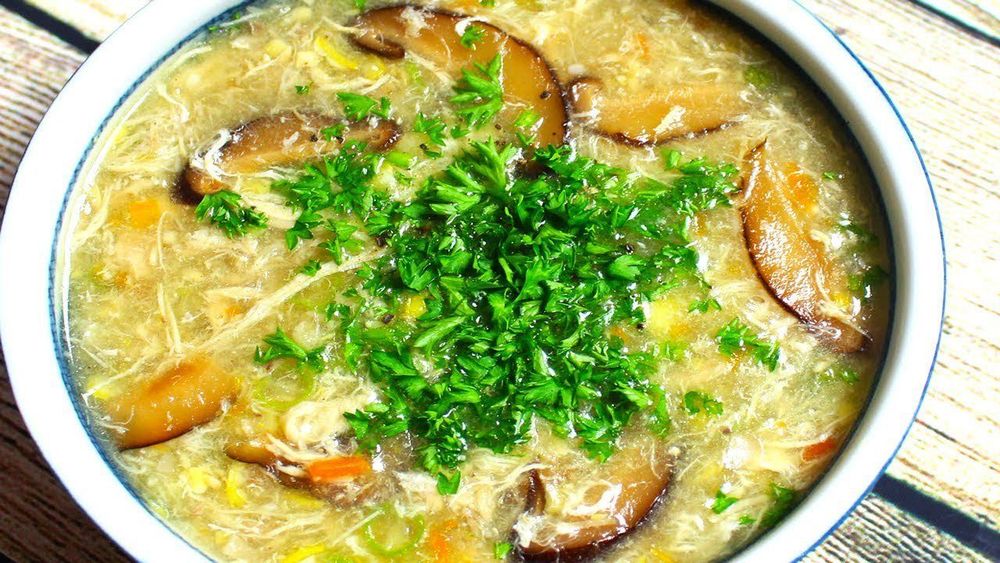
Cho bé ăn súp gà giúp tiêu đờm
4. Note when treating phlegm cough for children
Do not arbitrarily use cough medicine, expectorant expectorant in children without a doctor's prescription; Should keep the child's body warm, especially the neck and foot areas; Ensure children's living and learning environment is always clean, limiting dust and bacteria from attacking children; Ensure indoor humidity is at an appropriate level; Do not let your baby come into contact with people with colds or acute rhinitis; When the baby sleeps, the pillow should be raised to help the baby breathe easier and sleep better. Guaranteed quality sleep will contribute to improving children's resistance; Nutrition for the baby: Should add foods rich in vitamin C, vitamin A, zinc and iron and other nutrients. Children should eat foods with a lot of water, easy to digest but full of nutrients such as porridge, milk, ... should limit processed foods with a lot of fat such as fried, fried,...; When a child has an illness or is suspected of having a respiratory infection, the child should be brought to a medical facility quickly for early examination and treatment, thoroughly resolving the inflammation in the nose and throat. Inflammatory diseases of the respiratory tract in children often cause cough and sputum, making the baby uncomfortable, tired and affecting long-term development. Therefore, when the child shows signs of illness, parents should take the child to the doctor for examination and treatment as directed by the doctor.
In addition, to prevent respiratory diseases in children, parents should pay attention to nutrition to improve children's resistance. At the same time, add supporting foods containing lysine, essential micro-minerals and vitamins such as zinc, chromium, selenium, B vitamins,... snacks and less digestive problems.
Parents can learn more:
Why do you need to supplement Lysine for your baby?
The role of zinc - Guidelines for reasonable zinc supplementation
Please visit the website Vinmec.com regularly and update useful information to take care of your baby and family.





